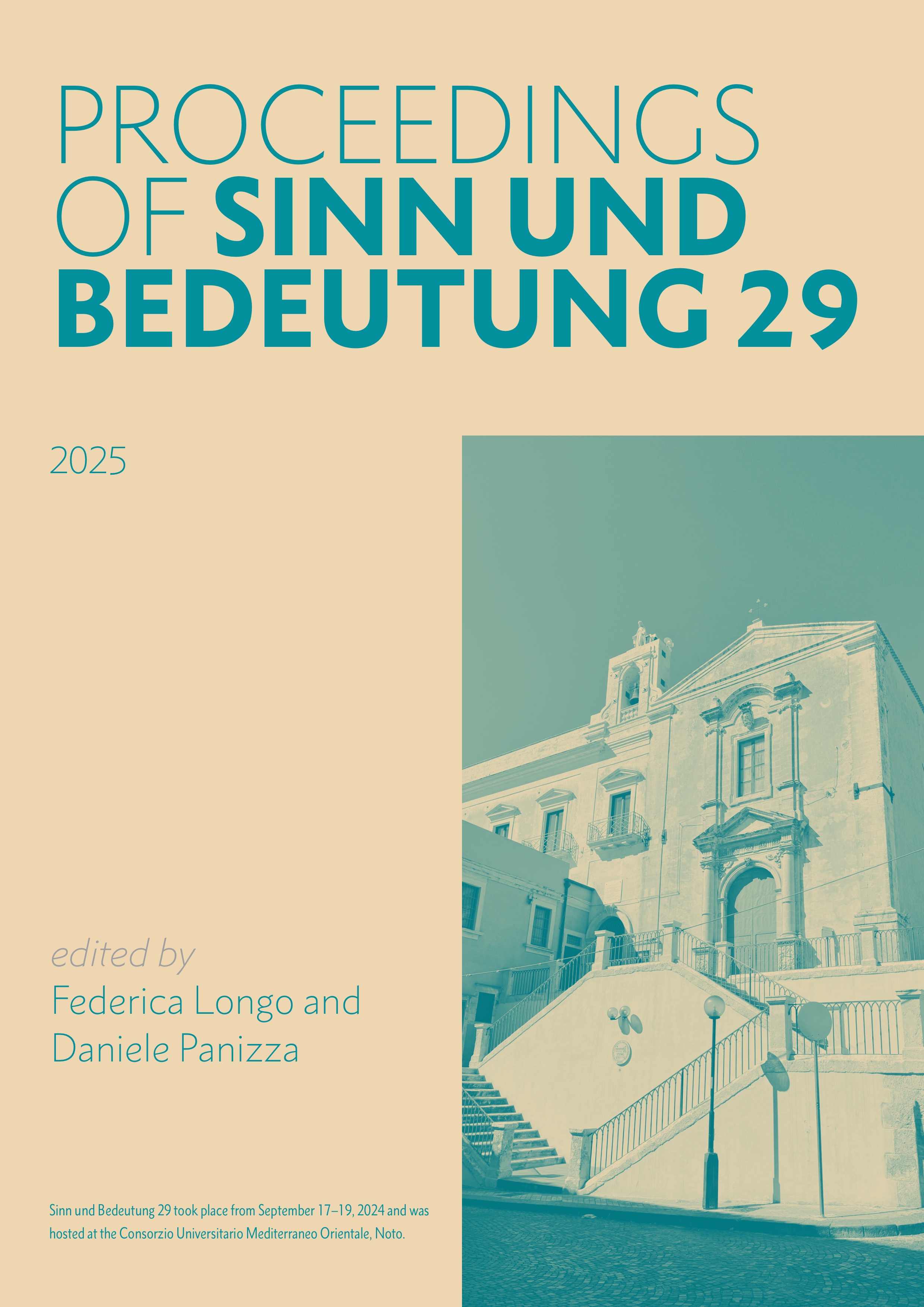Unifying the French evidential construction 'on di(rai)t que'
DOI:
https://doi.org/10.18148/sub/2024.v29.1239Abstract
The evidential constructions on dit que p (∼‘one says that p’) and on dirait que p (∼‘one would say that p’) differ in terms of meaning, compatibility with negation, and in terms of the moods they can embed. These factors additionally influence whether the speaker can be taken to endorse the prejacent. On dit- and on dirait-constructions were previously assumed to be distinct idioms, the former with an evidential reading, the latter, with an epistemic reading. In this paper, we propose that both forms are derived from the same core components, in particular, an evidential modal dire involving an accessibility relation which forces a homogeneity effect regarding the truth of its prejacent in evidentially accessible worlds. We show that the complex interaction between embedded mood, negation, and speaker endorsement in these constructions, can be explained assuming that on di(rai)t-constructions compete with structural alternatives differing w.r.t. the placement of negation, mood, and their subject pronoun.Downloads
Published
2025-09-22
How to Cite
Hénot-Mortier, A. (2025). Unifying the French evidential construction ’on di(rai)t que’. Proceedings of Sinn Und Bedeutung, 29, 692–709. https://doi.org/10.18148/sub/2024.v29.1239
Issue
Section
Articles
License
Copyright (c) 2025 Adèle Hénot-Mortier

This work is licensed under a Creative Commons Attribution 4.0 International License.
https://creativecommons.org/licenses/by/4.0/
